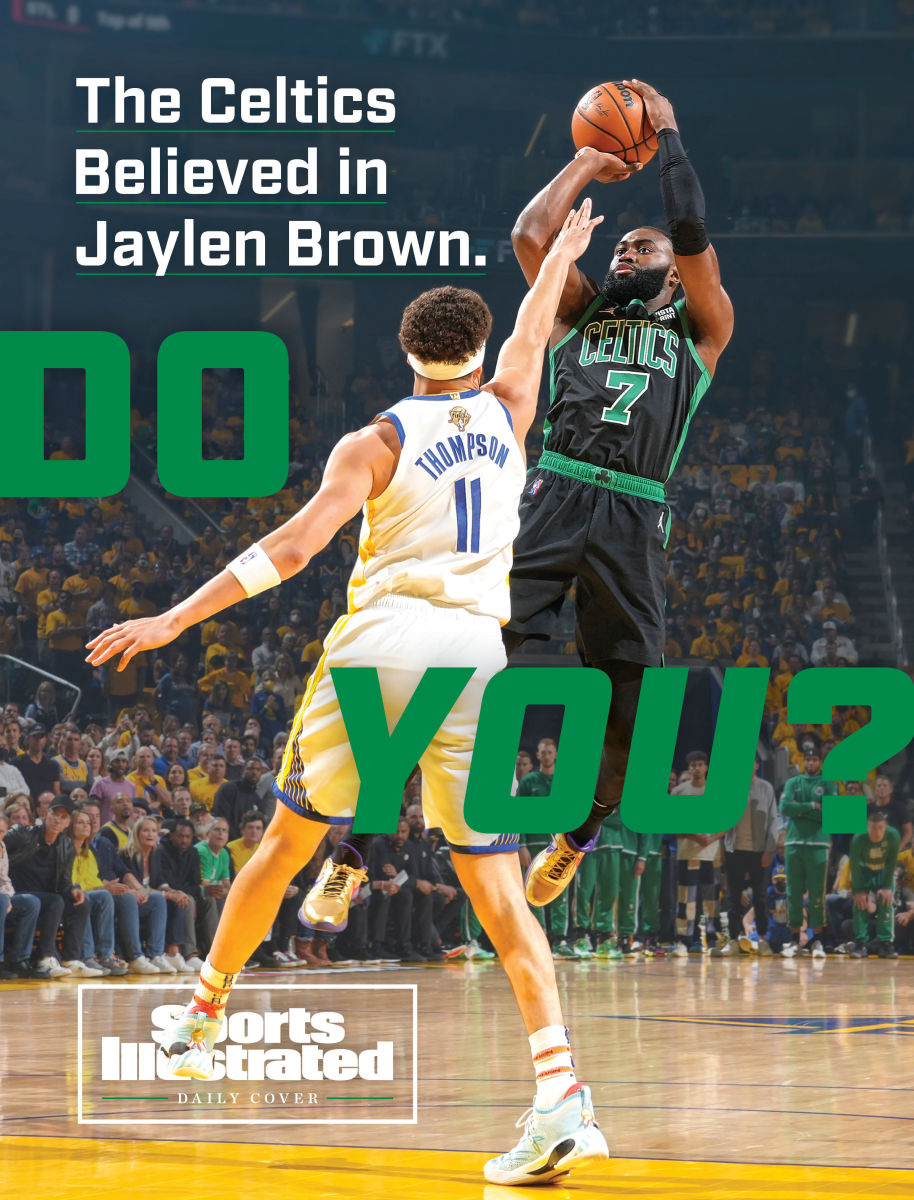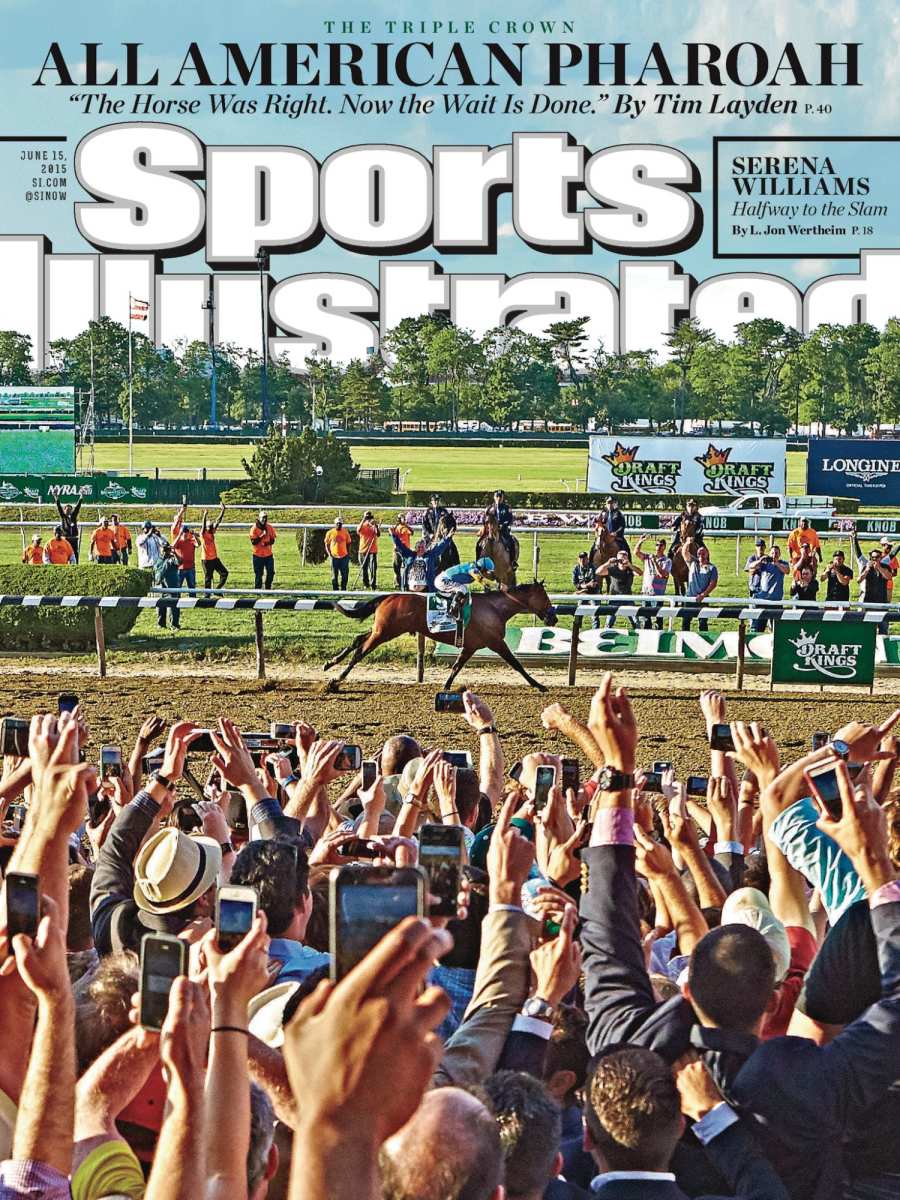SI:AM | It’s Upstart vs. Dynasty in the Stanley Cup Final
Good morning, I’m Dan Gartland. I’m glad the Stanley Cup Final starts late enough this year to get some time in the spotlight after the NBA Finals.
In today’s SI:AM:
🏒 Previewing the Stanley Cup Final
💔 A heartbreaking way to lose a no-hitter
🏀 The big problem costing the Celtics
If you're reading this on SI.com, you can sign up to get this free newsletter in your inbox each weekday at SI.com/newsletters.
Can the Lightning make it three in a row?
The Stanley Cup Final begins tonight in Denver as the Avalanche face the Lightning in Game 1 (8 p.m. ET on ABC).
In some ways this series is like this year’s NBA Finals, with a well-rounded upstart team composed of homegrown stars (the Avs/Celtics) against a dynasty in the making (the Lightning/Warriors). With a win, Tampa Bay would become the first team since the 1980–83 Islanders to win at least three Stanley Cups in a row, while Colorado is seeking its first championship since 2001.
Colorado, after compiling the best record in the Western Conference this season, has breezed through the playoffs, sweeping two of its first three series. The Bolts, meanwhile, survived in seven games against the Maple Leafs in the first round, swept the Panthers in the second round and dug themselves out of an 0–2 hole in the conference final to beat the Rangers in six.
Here’s what to watch for as the series gets underway:
- How to watch: All games will air on ABC, starting at 8 p.m. ET. Game 2 is on Saturday, Game 3 is Monday and Game 4 is a week from today. If the series goes the distance, Game 7 would be June 28.
- The standout stars: The Avalanche’s high-powered offense has been on fire during the postseason, averaging 4.64 goals per game, and it all starts with Cale Makar. The 23-year-old defenseman leads the team with 22 points (five goals, 17 assists) in the playoffs and has to be the favorite to win the Conn Smythe if Colorado wins the series. The guy doing most of the goal scoring for the Avs has been Nathan MacKinnon, who has an impressive 11 goals in 14 playoff games. On the other side, Nikita Kucherov has a team-high 23 points (seven goals, 16 assists) for the Lightning.
- The goaltending advantage: The Lightning are here because of their outstanding goalie, Andrei Vasilevskiy. He’s played every minute in goal during these playoffs, posting a .928 save percentage and a 2.27 goals-against average. He’s allowed one goal or zero in eight of his last 11 games. The Avs’ goalie situation is a little murkier. Darcy Kuemper was injured in Game 1 of the conference final and missed the final three games, but he’s “100% healthy” now, according to general manager Joe Sakic. Kuemper’s save percentage this postseason is a more pedestrian .897, down from the .921 he posted in the regular season.
- Injuries: Both teams received good news on the injury front before the start of the series. Colorado forwards Nazem Kadri and Andrew Cogliano both underwent hand surgery for injuries sustained during the conference final against the Oilers (Kadri was hurt in Game 3, Cogliano in Game 4). Less than two weeks later, Colorado coach Jared Bednar isn’t ruling out the possibility that they’ll play during this series. The news is better for the Lightning, who expect to have center Brayden Point, their second-leading scorer in the regular season, back for Game 1.
Picking a winner here is really tough. It probably comes down to whether Vasilevskiy can slow down the Colorado offense—and after seeing him dominate the Rangers I think he absolutely can. I’ll take the Lightning in six.
The best of Sports Illustrated

In today’s Daily Cover, Michael Pina looks at the evolution of Jaylen Brown and how his development has led the Celtics to the NBA Finals:
“Fast forward almost six years from that draft night and Brown’s journey has been ripe with postseason experience and accomplishment: The only year he missed the playoffs was 2021 (his only All-Star season), and it was because he tore a ligament in his left wrist. Since Brown was drafted, only 10 players have scored more playoff points (all are headed to the Basketball Hall of Fame). Only three have appeared in more games: P.J. Tucker, Jae Crowder and Danny Green. Throughout the 2022 playoffs, Brown has scored more points than anyone in the fourth quarter, with a higher effective field goal percentage than any player in at least 25 years who took over 60 shots.”
While talk of LIV Golf has dominated preparation for the U.S. Open, Brooks Koepka has tried to dodge questions about whether he’ll defect, Stephanie Apstein writes. … The latest episode of SI Weekly explores how former Iowa State basketball star Royce White went from leading protests against police brutality to being embraced by the far right. … Brian Straus breaks down the USMNT’s mud-soaked win in El Salvador and how it could impact the team’s World Cup decisions. … Chris Herring found the one thing that’s costing the Celtics in the NBA Finals: turnovers.
Around the sports world
Cardinals pitcher Miles Mikolas lost a no-hitter with two outs and two strikes in the ninth inning. … You can watch Mikolas’s highlight reel here. … Home plate umpire Nate Tomlinson left last night’s Angels-Dodgers game after a broken bat went through his mask and hit him in the face. … Wisconsin’s men’s and women’s basketball teams will play a doubleheader at the home of the Brewers. … The Michigan State and Gonzaga men’s teams are reportedly in talks for a game on the deck of an aircraft carrier. … Fernando Tatis Jr.’s return has been pushed back after his latest scan showed that his wrist isn’t healed enough to swing a bat.
The top five...
… plays I saw yesterday:
5. The Cardinals’ getting into a rundown on purpose to allow a run to score.
4. Craig Kimbrel’s perfect fastball on the corner for the final out against the Angels.
3. Isiah Kiner-Falefa’s bare-hand play to nab the speedy Kevin Keirmaier at first.
2. Xander Bogaerts’s surprisingly effortless throw from deep in the hole.
1. Kaylor Navas’s save to keep Costa Rica ahead of New Zealand in their World Cup qualifier.
SIQ
When the Bruins defeated the Canucks in Game 7 of the Stanley Cup Final on this day in 2011, which Boston player became a member of hockey’s “Triple Gold Club” (Stanley Cup winner, Olympic gold medalist and world champion)?
- Brad Marchand
- Milan Lucic
- Mark Recchi
- Patrice Bergeron
Yesterday’s SIQ: How old was Pat Summitt when she was named head coach at Tennessee?
Answer: 22. As Gary Smith wrote in 1998, Summitt, fresh out of UT-Martin, was hired to be an assistant coach for the women’s basketball team, but a few weeks after she accepted the job, the head coach quit to pursue a doctorate degree. In the early days after Title IX, before the NCAA sanctioned women’s basketball, Summitt found herself in charge of a real rinky-dink operation:
“At first it’s glorified intramurals, a tryout sheet posted on a bulletin board inviting women to play in front of four or five dozen fans on a shadowy floor crisscrossed by badminton, volleyball and basketball lines. Pat digs in. She sweeps floors, tapes ankles, sets out the chairs and towels, washes the uniforms on road trips. She drives the team to road games in a van, her head poked out the window to keep her awake on the drive home at 2 a.m. Behind her, her players glance at each other when the rain stops and the windshield dries and the wipers keep squeaking, squeaking, squeaking. No one musters the courage to utter a word.”
Not only was Summitt thrown into the fire of leading a team when she had no previous coaching experience, she was doing so while teaching physical education classes, taking courses toward her master’s degree and trying to rehab a torn ACL in hopes of making the U.S. Olympic team:
“She sits on the edge of a table, pokes her foot through the handles of a sack full of bricks and lifts till her knee screams, but never when her players are around to see her. She makes the ’76 Olympic team—a co-captain and the oldest player, at 24, on the U.S. roster that shocks the field and comes home with a silver medal. She takes the Lady Vols to the Final Four seven months later, in her third year as coach. She gets her master’s degree in physical education.”
She went through hell in those early years at Tennessee but, after she won 1,098 games in 38 years, it’s tough to say it wasn’t worth it.
From the Vault: June 15, 1971

This might be my favorite SI cover since I started working here. Not only does it have the spectacular lighting from the early evening sun, it tells a nearly complete story of American Pharoah’s Triple Crown win at Belmont. The two most unforgettable aspects of that day were American Pharoah’s substantial margin of victory (captured in the photograph with the horse all by himself in the home stretch) and the frenzy that his pursuit of the first Triple Crown in 37 years (as evidenced by the fact that nearly every two-legged creature in the frame, aside from jockey Victor Espinoza, has their phone out).
Sports Illustrated director of photo operations Erick W. Rasco was one of 90,000 people who made their way to Belmont Park that day. After the cover was released, he told Scooby Axson how he got the classic shot:
“During the race I had no view of the track. The crowd had begun to stand on chairs and benches,” Rasco said. “The only way I knew to fire the camera as American Pharoah approached the finish was from the intensity of the crowd around me yelling and cheering. Based on that, I fired a burst of frames from my camera. I didn’t see any of the horses at the finish. I hoped I timed it right with the crowd guiding me.”
“When I finally got to review the images in the workroom I was both relieved and thrilled. The right horse at the right time,” Rasco added.
As for the accompanying cover story by Tim Layden, all the references to trainer Bob Baffert read just a little bit differently after all the controversy that he’s been mired in over recent years.
Check out more of SI’s archives and historic images at vault.si.com.
Sports Illustrated may receive compensation for some links to products and services on this website.
